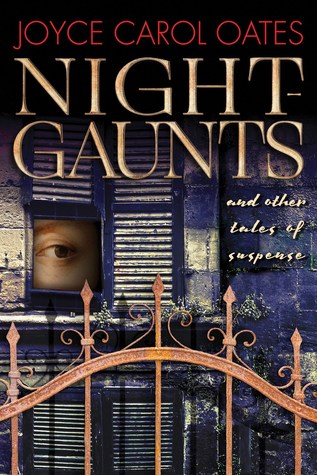Copyright 2021 by Gary L. Pullman
A movie poster tagline poses various questions related to
- WHO? (personal identity, agent, or agency),
- WHAT? (identity or identities, nature or natures, or origin or origins of an object or objects or an abstraction or abstractions),
- WHEN? (time, endurance, or era),
- WHERE? (location),
- HOW? (process, technique, or method);
- WHY? (cause, motive, purpose, function, or use), and
- HOW MANY? or HOW MUCH? (quantity of number or volume).
The tagline for the 1988 movie Call Me is “Her fantasies could be fatal.”
By identifying the questions evoked by this tagline, which should be considered in relation to the film's title, we can establish the elements of the plot that create mystery, thus creating, maintaining, and heightening suspense:
WHO is “she”? (personal identity)
WHAT are her “fantasies”? (fantasies)
WHY is she fantasizing? (motive)
HOW do her fantasies involve others? (process)
WHY do her fantasies involve others? (cause, motive, purpose, function, or use)
WHO is the other or are the others whom she includes in her fantasies?
WHY does she include this other or these others in her fantasies?
WHY could her “fantasies be fatal”? (cause)
From our investigation, we find that mysteries regarding who the woman is, what her fantasies are, why she fantasizes, how and why her fantasies involve others, and why her fantasies could be fatal fuel the suspense of the plot. Counting our “whos” and “whats” and “whys” and “hows,” we see that there is two “who” question, one “what” question, one “how” question,” and four “why” questions. Therefore, the plot's main source of suspense will be related to questions of cause, motive, purpose, function, or use (WHY?). Related to this primary source of will be the secondary questions concerning the personal identities (WHO?); the nature or natures, or origin or origins of an object or objects or an abstraction or abstractions; and process[es], technique[s], or method[s] regarding the way in which she includes another or others in her fantasies (HOW?).
The tagline uses the nominative case of the third-person personal pronoun to refer to the woman who fantasies, referring to the woman as “her.” This pronoun separates her from the viewer/reader, who regards him- or herself as an “I” (if a subject) or a “me” (if an object). The story is about her (and her fantasies); she is the protagonist. Her callers are the story's antagonists. They may also be her victims, since her “fantasies could be fatal.” Therefore, she can be a predator, even a killer. Vicariously, as we read her story (i. e., “call” her), we may become her victims as well.
WHY we might call her (our motive) suggests information about us: WHO we are and WHAT we want (and, therefore, WHAT we lack). “Call me” is an invitation to listen to her fantasies, to participate in them, vicariously, potentially as her victims. We have a motive for desiring to do so. Perhaps we are lonely, feel unloved, are unhappy either at being single or in our marriages. We lack something that we believe, or hope, that we may obtain from this woman, from her fantasies. According to the U. S. National Library of Medicine, “loneliness can lead to various psychiatric disorders [such as] depression, alcohol abuse, child abuse, sleep problems, personality disorders and Alzheimer’s disease. It also leads to various physical disorders like diabetes, autoimmune disorders like rheumatoid arthritis, lupus and cardiovascular diseases like coronary heart disease, hypertension (HTN), obesity, physiological aging, cancer, poor hearing and poor health. Left untended, loneliness can have serious consequences for mental and physical health of people.”
As the article explains, “Loneliness is caused not by being alone, but by being without some definite needed relationship or set of relationships.” This seems to be the lack, then, that those who answer the woman's invitation to 'call” her experience. We have learned much about the antagonists of the story, including their possible physical as well as their mental health issues and their causes. (The article also defines three types of loneliness that could be of use to a writer writing about the situation reflected in the Call Me movie tagline: “situational loneliness,” “developmental loneliness,” and “internal loneliness.”
The woman who fantasizes also wants something from us: our ears, our attention, our indulgence of her fantasies. However, she does not want us for long; we are disposable because she has, potentially, many callers, many replacements for us. We are like food, as it were, that sustains her, but nothing more. Therefore, we are expendable. What counts is she and her fantasies, her needs and desires.
Everything seems to revolve around her and her desires and needs, which suggests that she might be a narcissist, whose behavior, according to the Mayo Clinic, is characterized by:
- an exaggerated sense of self-importance
- a sense of entitlement and require constant, excessive admiration
- [the expectation of being] recognized as superior even without achievements that warrant it
- exaggerate[d] achievements and talents
- [a preoccupation] with fantasies about success, power, brilliance, beauty or the perfect mate [Now, we have an idea of the types of fantasies she might have!]
- [the belief that] they are superior and can only associate with equally special people
- [the tendency to] monopolize conversations and belittle or look down on people they perceive as inferior
- [the expectation of] special favors and unquestioning compliance with their expectations
- [taking] advantage of others to get what they want
- [having] an inability or unwillingness to recognize the needs and feelings of others
- [being] envious of others and believe others envy them
- [behaving] in an arrogant or haughty manner, coming across as conceited, boastful and pretentious
- [insisting] on having the best of everything—for instance, the best car or office
What is she like? Someone who is unable to form long-lasting, meaningful relationships? Someone unconcerned about the welfare, or even the lives, of others? Someone who is willing to kill others without remorse or concern? A sociopath, perhaps? A killer, certainly, and a survivor, of sorts, a survivor at all costs. She is amoral, it appears, and is not bound by the mores, customs, conventions, or laws of society. She seems either unconcerned about them or believes that she is above them, a force of nature or a law unto herself, perhaps.
In addition, she is likely to be narcissistic, feel herself to privileged and entitled, possess a sense of superiority, and be arrogant, manipulative, dominant, and authoritarian.
What sort of fantasies might she have? Those that provide what she wants, but lacks, even if her fantasies provide them only momentarily. Company? Intimacy? Relief from loneliness, boredom, or emptiness? A sense of belonging, for a moment, at least, or a sense of being in control? She will also probably fantasize “about success, power, brilliance, beauty or the perfect mate.” Presumably, those who do not properly reinforce her concept of herself or are in any other way less than “the perfect mate” would be murdered, since the fact that her fantasies “could be fatal” suggests that sometimes they are; other times, they are not. Why does she sometimes kill, sometimes spare, those who answer her call? It seems that her decision would depend on whether or how well her callers respond to her fantasies, to her? On how well her callers fulfill her needs.
It seems that she could be a narcissistic sociopathic serial killer, possibly with sadistic sexual tendencies. As the Mayo Clinic website points out, “Antisocial personality disorder, sometimes called sociopathy, is a mental disorder in which a person consistently shows no regard for right and wrong and ignores the rights and feelings of others.” In addition, such persons “tend to antagonize, manipulate or treat others harshly or with callous indifference. They show no guilt or remorse for their behavior.” People who suffer from antisocial personality disorder also “often violate the law, becoming criminals. They may lie, behave violently or impulsively, and have problems with drug and alcohol use. Because of these characteristics, people with this disorder typically can't fulfill responsibilities related to family, work or school.” Operating one's own erotic telephone service might be an ideal career choice for someone who displays such symptoms as the Mayo Clinic website lists for the antisocial personality disorder:
- Disregard for right and wrong
- Persistent lying or deceit to exploit others
- Being callous, cynical and disrespectful of others
- Using charm or wit to manipulate others for personal gain or personal pleasure
- Arrogance, a sense of superiority and being extremely opinionated
- Recurring problems with the law, including criminal behavior
- Repeatedly violating the rights of others through intimidation and dishonesty
- Impulsiveness or failure to plan ahead
- Hostility, significant irritability, agitation, aggression or violence
- Lack of empathy for others and lack of remorse about harming others
- Unnecessary risk-taking or dangerous behavior with no regard for the safety of self or others
- Poor or abusive relationships
- Failure to consider the negative consequences of behavior or learn from them
- Being consistently irresponsible and repeatedly failing to fulfill work or financial obligations
So, is the woman who fantasizes a narcissistic sociopath who entertains dangerous, potentially fatal fantasies about others who accept her invitation to “call me”? Does she operate an erotic telephone service for lonely people who lack “a relationship or set of relationships”? Could she be a sadist and her callers masochists whom she lures into a sadomasochistic telephonic relationship? Does fantasizing sometimes cross the line between fantasy and reality, resulting in the deaths of her callers? Is the woman who fantasizes a femme fatale? Our search for answers to the questions the tagline provokes and our research into the implications of the tagline certainly seems to open such possibilities.
Checking a synopsis of the movie's actual plot shows that the screenwriters chose a different plot than the one we might envision from the movie's tagline, but that doesn't mean our ideas of the protagonist's character, the antagonists' characters, and the protagonist operating her own erotic telephone service while she searches for her “perfect mate,” according to her own needs and desires as a narcissistic sociopath with a well-defined list or criteria is “wrong.” It is simply an alternative plot—and perhaps a better one, at that.
Here are a few more horror movie taglines that you can try, each of which is capable of suggesting personality traits, if not mental disorders, for a protagonist and one or more antagonists and a plot based on those personality traits. Using horror movie taglines as a means of developing characters' personality traits goes a long way toward generating plot ideas as well.
Dawn of the Dead: When there's no more room in Hell, the dead will walk the Earth.
Paranormal Activity: What happens when you sleep?
Saw: Every piece has a puzzle.
Texas Chainsaw Massacre: Who will survive, and what will be left of them?
The Grudge: It never forgives. It never forgets.
Wolf Creek: How can you be found when no one knows you're missing?




























